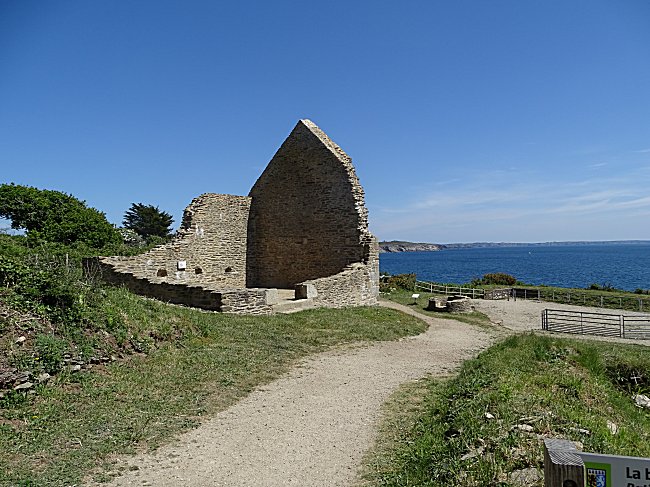Access :
Between Brest and Le Conquet, on the D789, after crossing Kerfily, the road goes down a steep slope and then upwards followed by a right turn. After this one, take the first road on the left and continue straight ahead until you reach the car park surrounding the F.F.I. Memorial.
From Le Conquet, on the road to Brest, go past the second roundabout, and after the first bend take the second small road on the right and follow it to the car park.
Park there and, in front of the sea, take the GR 34 path on the left. It does not follow the sea but bypasses a property. Just after this one, follow the coastal path on the right. At 100 m we cross the battery.
This remarkable site, owned by the Finistère General Council, enjoys an admirable view of the immense maritime space where sailboats once waited, hoping to obtain a favourable wind to enter the Brest Channel as far as the bay of Brest.
From this promontory, a battery of cannons could easily fire at enemy ships and its importance in defending the military port is well understood.
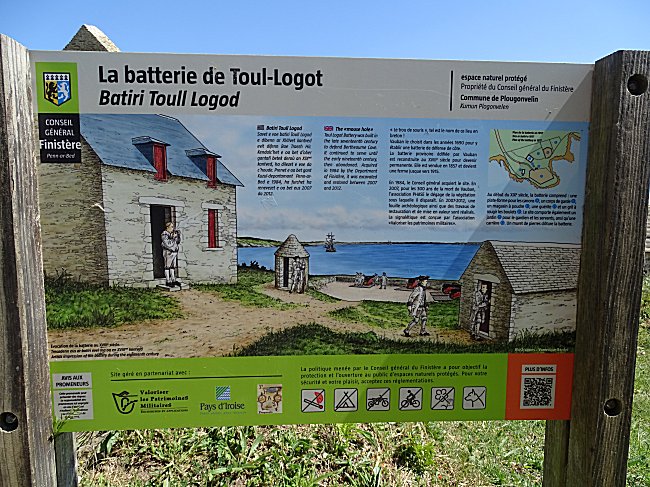
The history of Toul Logot is summarized in french on the site of the Finistère General Council .
It is to the association "PHASE", of Plougonvelin, that we owe the resurrection of this military complex of the XVIIth century whose ruins had been sleeping under a thick layer of scrub for more than 150 years. Details in french of the documentary research, clearing operations and excavations that took place in 2009 and 2010 for the inauguration of the consolidated remains of the battery in 2013 can be found on the PHASE website.
These remains comprise several parts:
- an artillery terrace
- the basis of a sentry box
- a store powder
- a guard house
- an adjoining area with garden and quarry.
Excavations revealed that the ruins had been used as a training ground and even a target for German troops during the Occupation. More recent work has also partially deteriorated them during the construction of the coastal path.
The artillery terrace
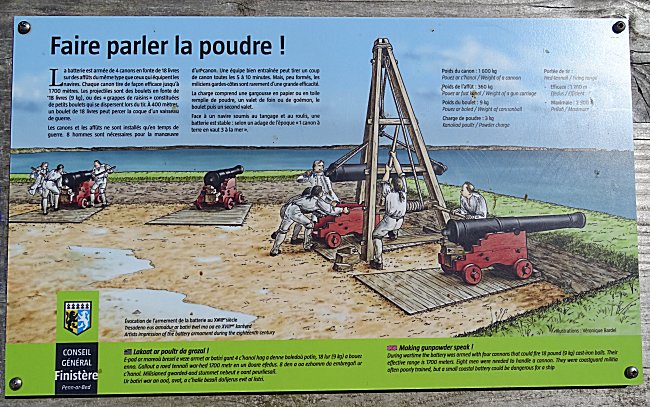
Panel of the General Council of Finistère, illustrated by Véronique BARDEL
However, it can be assumed that the cannons used were much larger than those of the marine guns shown here.
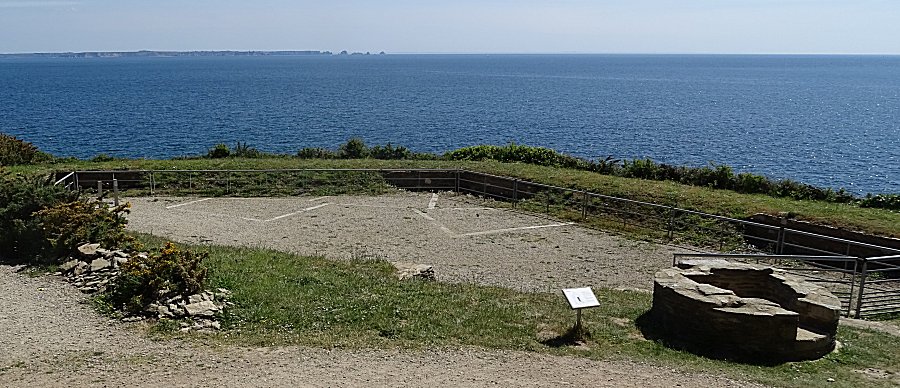
The artillery terrace today :
Behind the railing, a stone wall protects its embankment.
In the foreground, what remains of the guard post.
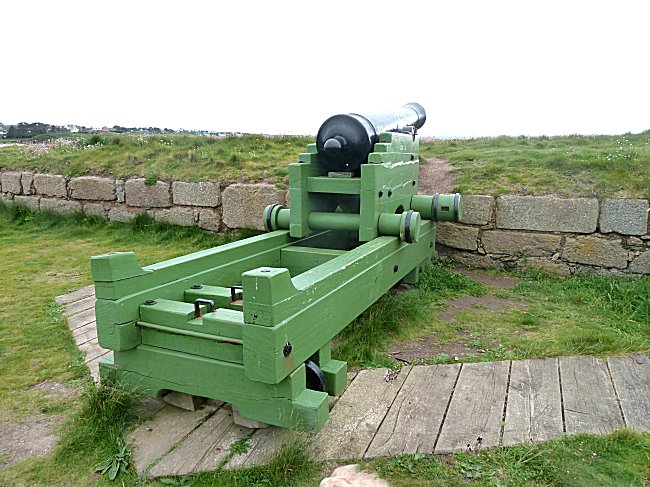
Reconstruction of a cannon and its mount at Lanildut
On this platform, 4 to 6 cannons were installed. Much more impressive than the guns on board ships, their heavy mount could easily be pivoted by rolling on beams buried in the ground. As the panel below shows, their powerful shot could pierce a 60 cm thick oak shell at 600 m. Even more formidable, red-hot cannonballs were fired at enemy sailboats to set them on fire.
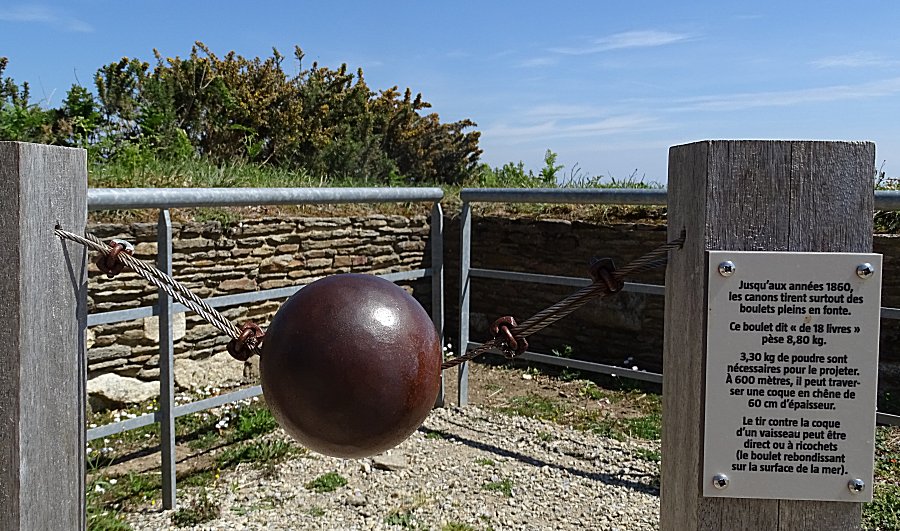
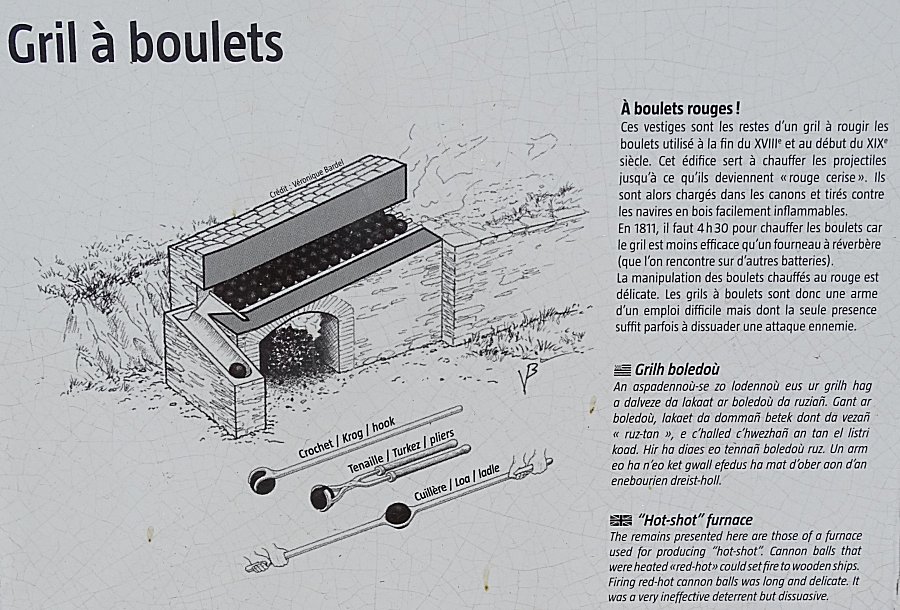
Drawing by Véronique Bardel
The sentry box
Although only the base remains, we can get an idea of this small construction thanks to the one that still remains on the coast near the Conquet.
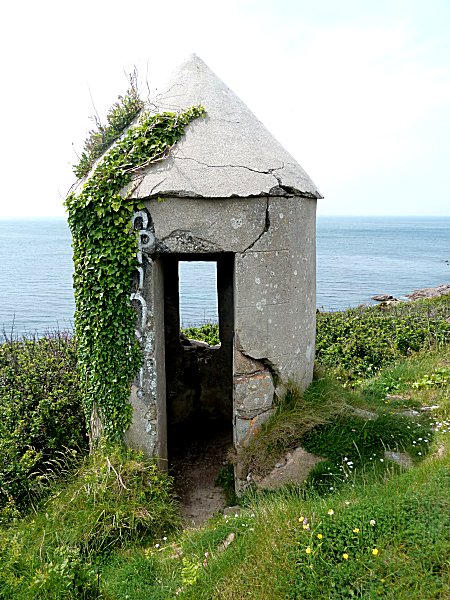
The Bilou sentry box
in Le Conquet
The store powder
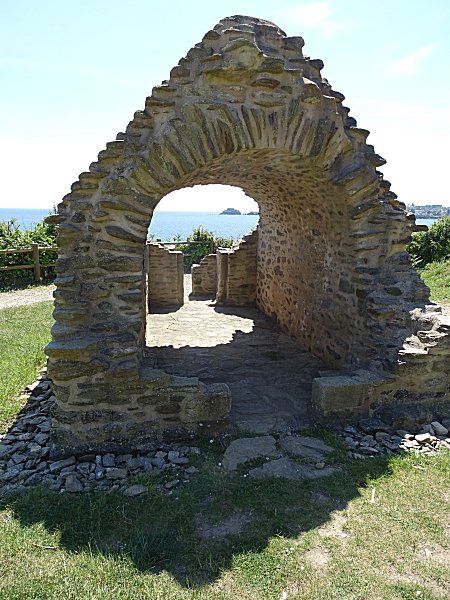
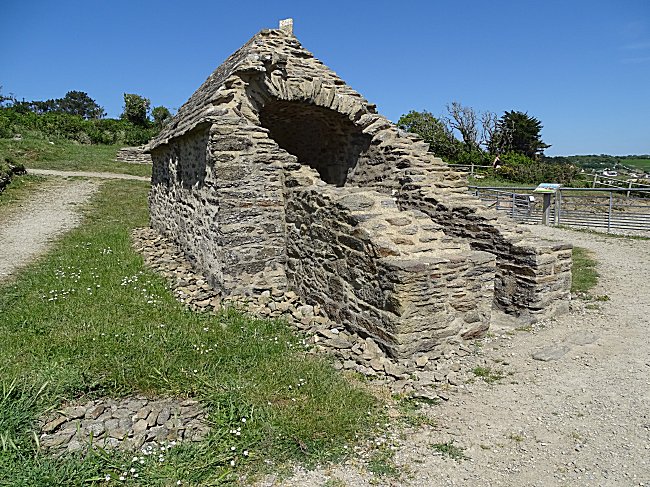
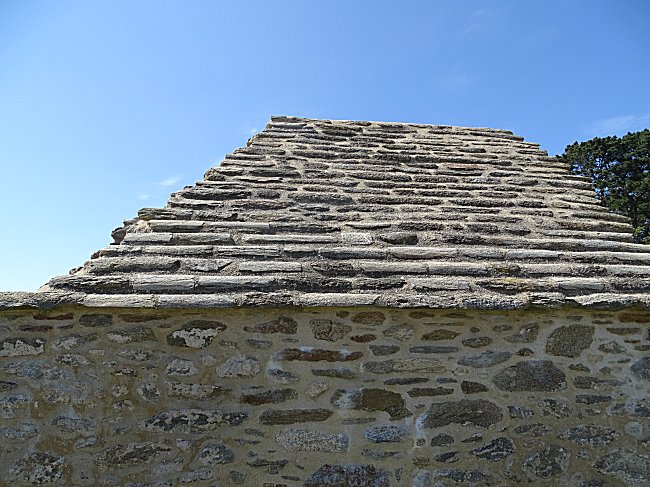
Thick walls and a sturdy stone roof protected the precious reserves of powder from enemy fire.
However, this solid building has been very damaged. Inside, a drawing reconstructs the general appearance of the building. A watertight floor was to isolate the powder barrels from soil moisture.
The guard house
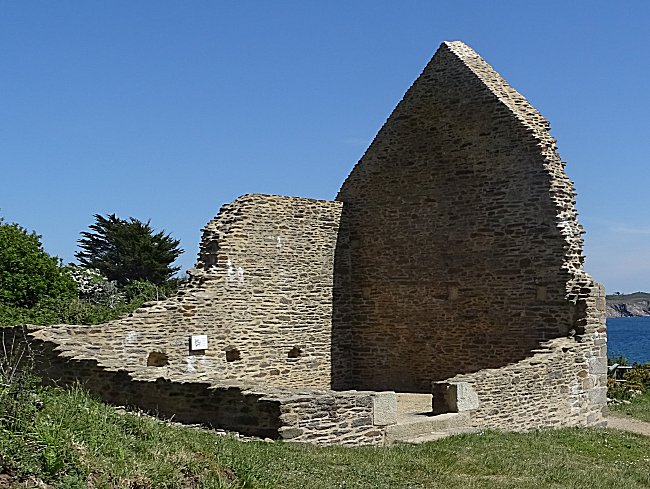
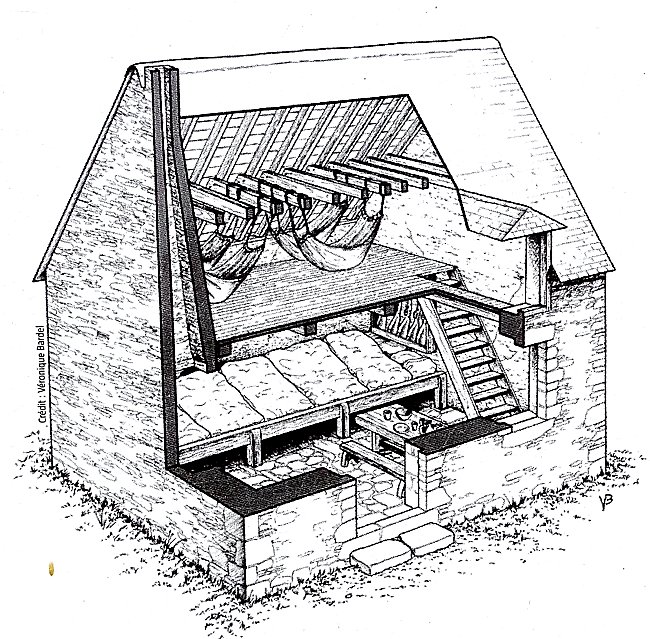
Drawing by Véronique Bardel
This building, in peacetime, was the home of the battery keeper. In wartime, it was also necessary to house the gunmen, some thirty coast guard militiamen. Bunks were then installed on the ground floor, hammocks hung on the first floor, while tent camp beds were mounted outside.
This battery was obviously not the only one along the coast and the shots crossed each other to make them more effective. The coast guard militia, most often composed of local inhabitants, thus had an essential role in conflicts. The mandatory nature of its recruitment, by forcing farmers to abandon their work in the fields, explains its unpopularity. However, it was the progress of the artillery that made the Toul Logot battery obsolete. It was abandoned by the Army and sold in 1857.
READ MORE :

Nicolas Meynen ( dir )
Presses Universitaires de Rennes 2010





